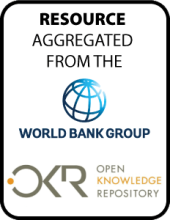Land Library Search
Through our robust search engine, you can search for any item of the over 73,000 highly curated resources in the Land Library.
If you would like to find an overview of what is possible, feel free to peruse the Search Guide.
/ library resources
Showing items 1 through 9 of 831.Ulaanbaatar's (UB) population has swollen from half a million in 2001 to approximately 1.2 million in 2011, accounting for over 40 percent of the country's population. This trend is likely to continue as economic growth is increasingly concentrated in UB.
Agriculture is the economic foundation of many Sub-Saharan Africa (SSA) countries, employing about 60 percent of the workforce and contributing an average of 30 percent of gross domestic product.
The objective of this case study is to document an example of the successful design and implementation of housing micronance (HMF) products by analyzing the approach taken by the First Micronance Bank of Afghanistan (FMFB-A) from 2009 to 2013.
This tenth edition of Doing Business sheds light on how easy or difficult it is for a local entrepreneur to open and run a small to medium-size business when complying with relevant regulations.
Scientific evidence indicates that global warming could well lead to a sea-level rise of 1 meter or more in the 21st century.
To amend the Deeds Registries Act, 1937, so as to provide discretion in respect of the rectification of errors in the name of a person or the description of property mentioned in deeds and other documents; to provide for the issuing of certificates of registered title taking the place of deeds th
Violent conflict is a pervasive feature of the recent global landscape which has lasting impacts on human capital and these impacts are seldom gender neutral. Death and destruction alter the structure and dynamics of households, including their demographic profiles and traditional gender roles.
The author provides a briefing on cost-benefit analyses (CBA) for disaster risk reduction (DRR), stating that the most cost-effective forms of DRR investment tend to be non-structural approaches, such as land use planning, warning systems, and household-level changes.
Research has had a powerful impact on
policy in Uganda, affecting the climate of opinion,
improving the quality of the policy debate, and helping
focus public policy and intervention on poverty reduction.






